Conference Presentations by Eman H.Zidan

Eman H.Zidan, Sara Mosca, Sara Bellei, Austin Nevin, Gianluca Valentini, Rinaldo Cubeddu, Siham ... more Eman H.Zidan, Sara Mosca, Sara Bellei, Austin Nevin, Gianluca Valentini, Rinaldo Cubeddu, Siham Ramadan, Souty Adel, Maher Eissa, Tommaso Frizzi, Michele Gironda, Ibrahim El Rifai, Hend Mahgoub, Sabah Sadik, Mohamed Gamal Rashed, Abdelazek Elnaggar, Daniela Comelli. Multi-Analytical Study of The construction and painting of a Late Period Sarcophagus in The Egyptian Museum of Cairo. Poster presented at Technart conference, 27-30 April 2015, Catania, Italy.
Abstract:
Two parts of an anthropoid sarcophagus were found in the basement of the Egyptian Museum in Cairo together with a third half sarcophagus. There is no information available about their provenance or the circumstance surrounding their arrival in the museum and there is no written suggestion of any connections between the three pieces. Coffin A is a very distinguished anthropoid lid, mostly of an inner coffin, where it shaped in the mummified form without arms. It is decorated with simple motifs, typical scenes, and other decorations of the Late Period. Though it is a complete coffin or lid, its style is a perfect piece of art showing idealist work. The frontal design consists of a sculpted head with a wig and a separately made false beard, wsx-collar, and a scene depicted Isis and Nephthys mourning the dead on the mummification bed, as the central scene on the lid. B Coffin A was examined with a multi-analytical approach, comprising in-situ imaging and non-invasive portable spectroscopic techniques. Advanced imaging techniques, including visible-induced luminescence and Fluorescence Lifetime Imaging (FLIM), were carried out on key areas and different sides of the coffin, with the aim of highlighting pigment distribution, similarities in the application of specific colors and degradation phenomena. Egyptian blue is clearly visible in the IRF image. Preliminary image processing suggests that the face of the coffin is showing a possible use of red ochre, while the yellow color could be orpiment. The eyes show different UV fluorescence effects than the eyebrow and eye black delineation which requires further analysis. Green pigment is also mapped in the IRFC image with a lighter blue color which suggests the presence of malachite. The upper part of the coffin is showing a black scarab surrounded by rectangular green shapes and defined by yellow color and white color at the lower end. Egyptian blue is clearly visible in the IRF image which is mainly present in the rectangular shapes which are seen as a greenish. There is an apparent conservation treatment of the scarab where parts of the legs and parts of its lower body were added to the original. A A In-situ XRF and Raman spectroscopy were used for pigment identification. Results indicate the use of Calcite as a ground, Hematite (Fe 2 O 3), Egyptian blue, Realgar (As 4 S 4) and its degraded form of Pararealgar, which is most frequently encountered on Ancient Egyptian coffins. Raman spectrum of a white point of the coffin (black line). As a reference, the Raman spectrum of calcium carbonate is provided (green line). Raman spectrum of the yellow points analyzed on the coffin compared with the realgar and pararealgar. Points analyzed with Raman spectroscopy on the " unknown " coffin, Table of the Raman identified bands (s = strong, m = medium, w = weak, v = very, sh = shoulder, br = broad) FLIM analysis (lines 2-3) of white painted areas of the coffin cartouche. Areas characterized by a SHORTER lifetime in blue suggest degradation phenomena or the application of a different material, perhaps a consolidant, to the surface. XRF spectra registered on the yellow painted area, the spectra confirming the presence of realgar/pararealgar (As)

We are delighted to announce the International Conference on the Science of Ancient Egyptian Mate... more We are delighted to announce the International Conference on the Science of Ancient Egyptian Materials and Technologies (SAEMT), to take place in Cairo in November 2017. The conference invites the submission of abstracts for papers and posters in English from international researchers who employ various archaeological sciences in their research on ancient Egyptian materials, and their adoption, developments and technologies. The conference's aims are threefold: first, to provide specialists employing archaeological sciences, who may not often meet, the opportunity to present their research and exchange ideas. Secondly, the conference will emphasise the importance of archaeological sciences and interdisciplinary approaches within Egyptology. Finally, the conference will provide a space for those working within Egypt to discuss measures for overcoming limitations that hinder scientific applications in Egypt. Panel discussions will also explore topics such as access to the necessary reliable facilities to perform analysis and how to improve the levels and standards of analytical methods. The papers will be published in a peer reviewed publication. Topics: We invite papers and posters dealing with archaeometric approaches to the following themes: Mining and quarrying: working at raw materials outcrops and stone tools technology. Building: State controlled and domestic construction materials and methods: stone, mud and wood. Pyro-technology: production and processing of metals, ceramics, glass, faience and frit. Graphic and aesthetic technologies: writing, painting and sculpture. Funerary technologies: materials and techniques connected with burial. Agricultural and food technology: subsistence, production and consumption. Domestic and local craft technologies: providing for the living and the dead-with textiles and leatherworking, carpentry, basketry, cosmetics, ivory and bone working.
Papers by Eman H.Zidan
Measurement, 2018
Highlights A unique Late Period Coffin is studied at the Egyptian Museum Cairo UV and IR Imag... more Highlights A unique Late Period Coffin is studied at the Egyptian Museum Cairo UV and IR Imaging maps the presence of Egyptian Blue and other pigment mixtures A lead ground is confirmed with Scanning Electron Microscopy and X-ray Fluorescence Portable Raman spectroscopy has been used to map As-based pigments
International Journal of Tourism and Hospitality Management, Jun 1, 2021
Egypt has declared that 2018 as the Year of Persons with Disabilities, flowing the same line, the... more Egypt has declared that 2018 as the Year of Persons with Disabilities, flowing the same line, the ministry of antiquities conducted a project in partnership with an Egyptian NGO Helm Foundation, that specializes in promoting the inclusion of people with disabilities in all aspects of life. The project covered the main aspects of disabilities i.e. Mobility Access (by building accessible physical trails), Visually Impaired (Brochures in braille), Deafness and hearing loss (videos translated into hearing disability Signal), etc. The main challenges and difficulties was the Lack of smooth paths. There are many areas with large stones or dusty/sandy loose soil.
International Journal of Tourism and Hospitality Management, Jun 1, 2021
Egypt has declared that 2018 as the Year of Persons with Disabilities, flowing the same line, the... more Egypt has declared that 2018 as the Year of Persons with Disabilities, flowing the same line, the ministry of antiquities conducted a project in partnership with an Egyptian NGO Helm Foundation, that specializes in promoting the inclusion of people with disabilities in all aspects of life. The project covered the main aspects of disabilities i.e. Mobility Access (by building accessible physical trails), Visually Impaired (Brochures in braille), Deafness and hearing loss (videos translated into hearing disability Signal), etc. The main challenges and difficulties was the Lack of smooth paths. There are many areas with large stones or dusty/sandy loose soil.
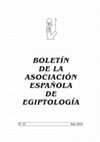
This report presents a brief description of the archaeological, epigraphic, conservation and site... more This report presents a brief description of the archaeological, epigraphic, conservation and site management activities carried out by the Middle Kingdom Theban Project —a project initiated under the auspices of the Freie Universität Mission (FUB) at Deir el-Bahari— in the BAEDE, Boletín de la Asociación Española de Egiptología, núm. 25, 2016, págs. 89-112, ISSN: 1331-6780 BAEDE, no 25, 2016, 89-112, ISSN: 1331-6780 89 BAEDE, no 25, 2016, 89-112, ISSN: 1331-6780 A. J. MORALES, S. FALK, M. OSMAN, R. SÁNCHEZ, H. SHARED, K. YAMAMOTO y E. H. ZIDAN 90 first two seasons (2015-2016). The project shall be carried out in the next seasons with the support of the Universidad de Alcalá (UAH). The two initial seasons have provided significant evidence to the team for investigating the origin, history, and role of the early Middle Kingdom necropolis in the northern hills of Deir el-Bahari, its tombs, and elite officials buried there, and should help to comprehend the political history, social con...

Measurement: Journal of the International Measurement Confederation 118, 2018
This work presents the analysis of polychrome objects using transportable instrumentation for the... more This work presents the analysis of polychrome objects using transportable instrumentation for the analysis and characterisation of the palette of Ancient Egyptian Objects from a Late-period coffin in the Egyptian Museum in Cairo, with a focus both on practical details of measurements and specific results from imaging and point-like analyses. Multispectral imaging was combined with X-ray fluorescence, Raman and Photoluminescence spectroscopies. All instrumentation was transported to the museum and analysis was carried out in situ within the Multi-spectral imaging Conservation Laboratory. Results demonstrate the strength of imaging for mapping the presence of Egyptian Blue and mixtures of the pigment, while elemental and molecular analyses indicate the presence of mixtures of pigments to create greens, and the selective use of yellow earth or yellow ochre. In situ analysis informed sampling to determine the type of wood used and the stratigraphy of the multiple layers of white pigments an...
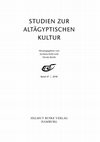
by Antonio J. Morales, Kelly Accetta Crowe, Marta Arranz Cárcamo, Teresa Bardají Azcárate, Manuel F Carrillo, Carlos Gracia Zamacona, Sofía Illana López, Patricia Mora Riudavets, Mohamed Osman, Raúl Sánchez Casado, Dina Serova, Ahmed Tarek, Sebastian Falk, and Eman H.Zidan The current report presents the archaeological, epigraphic, conservation, geological, and archite... more The current report presents the archaeological, epigraphic, conservation, geological, and architectural works carried out by the Middle Kingdom Theban Project – a project under the auspices of the University of Alcalá
Expedition to Deir el-Bahari (Luxor) – in its fourth season (March-April 2018). In this season, the archaeological team expanded its concession, with the incorporation of two new areas in the eastern side of the necropolis of Deir el-Bahari (tombs TT316, MMA519, MMA520, and E1) and the Asasif cemetery (TT103, TT366). The expedition continued with its work in the mortuary complexes of Henenu (TT313) and Ipi (TT315), initiated the study of the tombs at the eastern area, excavated the entrance and main corridor of a new tomb (E1) in this part of the necropolis, and studied the epigraphic and architectural issues in the tombs of Dagi (TT103) and Djari (TT366).
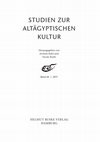
by Antonio J. Morales, Kelly Accetta Crowe, Sergio Alarcón Robledo, ernesto echeverria valiente, Sebastian Falk, Salima Ikram, Mohamed Osman, Raúl Sánchez Casado, Kei Yamamoto, Eman H.Zidan, Dina Serova, Manuel F Carrillo, and Sofía Illana López This report presents the archaeological, epigraphic, conservation, geological, architectural, and... more This report presents the archaeological, epigraphic, conservation, geological, architectural, and site management activities carried out by the Middle Kingdom Theban Project – a project under the auspices of the University of Alcalá Expedition to Deir el-Bahari (Luxor) – in its third season (March–April 2017). In this season, the archaeological
team focused on the mortuary complexes of both Henenu (TT 313) and Ipi (TT 315), with interesting findings such as the re-discovery of the mummification deposit for the vizier Ipi, originally located by Herbert Winlock and the Metropolitan Museum of New York in 1922, and the stepped ramp of Henenu. In addition, conservation and restoration activities were conducted in the sarcophagus chamber of Ipi while new works on the geology, architecture, and 3D reconstruction of the tombs were undertaken during the season.
by Raúl Sánchez Casado, Antonio J. Morales, Mohamed Osman, Kei Yamamoto, Eman H.Zidan, Sebastian Falk, Dina Serova, ernesto echeverria valiente, Sofía Illana López, Patricia Mora Riudavets, and Iria Souto This report presents the archaeological, epigraphic, conservation and site management activities ... more This report presents the archaeological, epigraphic, conservation and site management activities carried out by the Middle Kingdom Theban Project – a project under the auspices of the Freie Universität Berlin Mission to Deir el-Bahari – in the first two seasons (2015–2016). The two initial seasons have provided abundant material
for the researchers to investigate the origin, history, and role of the early Middle Kingdom necropolis in the northern hills of Deir el-Bahari, its tombs and elite officials buried there, and shall shed light on the history, society, and religion of the period initiated by Mentuhotep II at Thebes at the end of the Eleventh Dynasty.


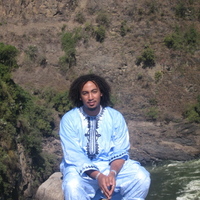



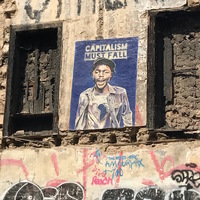
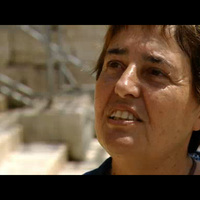



Uploads
Conference Presentations by Eman H.Zidan
Abstract:
Two parts of an anthropoid sarcophagus were found in the basement of the Egyptian Museum in Cairo together with a third half sarcophagus. There is no information available about their provenance or the circumstance surrounding their arrival in the museum and there is no written suggestion of any connections between the three pieces. Coffin A is a very distinguished anthropoid lid, mostly of an inner coffin, where it shaped in the mummified form without arms. It is decorated with simple motifs, typical scenes, and other decorations of the Late Period. Though it is a complete coffin or lid, its style is a perfect piece of art showing idealist work. The frontal design consists of a sculpted head with a wig and a separately made false beard, wsx-collar, and a scene depicted Isis and Nephthys mourning the dead on the mummification bed, as the central scene on the lid. B Coffin A was examined with a multi-analytical approach, comprising in-situ imaging and non-invasive portable spectroscopic techniques. Advanced imaging techniques, including visible-induced luminescence and Fluorescence Lifetime Imaging (FLIM), were carried out on key areas and different sides of the coffin, with the aim of highlighting pigment distribution, similarities in the application of specific colors and degradation phenomena. Egyptian blue is clearly visible in the IRF image. Preliminary image processing suggests that the face of the coffin is showing a possible use of red ochre, while the yellow color could be orpiment. The eyes show different UV fluorescence effects than the eyebrow and eye black delineation which requires further analysis. Green pigment is also mapped in the IRFC image with a lighter blue color which suggests the presence of malachite. The upper part of the coffin is showing a black scarab surrounded by rectangular green shapes and defined by yellow color and white color at the lower end. Egyptian blue is clearly visible in the IRF image which is mainly present in the rectangular shapes which are seen as a greenish. There is an apparent conservation treatment of the scarab where parts of the legs and parts of its lower body were added to the original. A A In-situ XRF and Raman spectroscopy were used for pigment identification. Results indicate the use of Calcite as a ground, Hematite (Fe 2 O 3), Egyptian blue, Realgar (As 4 S 4) and its degraded form of Pararealgar, which is most frequently encountered on Ancient Egyptian coffins. Raman spectrum of a white point of the coffin (black line). As a reference, the Raman spectrum of calcium carbonate is provided (green line). Raman spectrum of the yellow points analyzed on the coffin compared with the realgar and pararealgar. Points analyzed with Raman spectroscopy on the " unknown " coffin, Table of the Raman identified bands (s = strong, m = medium, w = weak, v = very, sh = shoulder, br = broad) FLIM analysis (lines 2-3) of white painted areas of the coffin cartouche. Areas characterized by a SHORTER lifetime in blue suggest degradation phenomena or the application of a different material, perhaps a consolidant, to the surface. XRF spectra registered on the yellow painted area, the spectra confirming the presence of realgar/pararealgar (As)
Papers by Eman H.Zidan
Expedition to Deir el-Bahari (Luxor) – in its fourth season (March-April 2018). In this season, the archaeological team expanded its concession, with the incorporation of two new areas in the eastern side of the necropolis of Deir el-Bahari (tombs TT316, MMA519, MMA520, and E1) and the Asasif cemetery (TT103, TT366). The expedition continued with its work in the mortuary complexes of Henenu (TT313) and Ipi (TT315), initiated the study of the tombs at the eastern area, excavated the entrance and main corridor of a new tomb (E1) in this part of the necropolis, and studied the epigraphic and architectural issues in the tombs of Dagi (TT103) and Djari (TT366).
team focused on the mortuary complexes of both Henenu (TT 313) and Ipi (TT 315), with interesting findings such as the re-discovery of the mummification deposit for the vizier Ipi, originally located by Herbert Winlock and the Metropolitan Museum of New York in 1922, and the stepped ramp of Henenu. In addition, conservation and restoration activities were conducted in the sarcophagus chamber of Ipi while new works on the geology, architecture, and 3D reconstruction of the tombs were undertaken during the season.
for the researchers to investigate the origin, history, and role of the early Middle Kingdom necropolis in the northern hills of Deir el-Bahari, its tombs and elite officials buried there, and shall shed light on the history, society, and religion of the period initiated by Mentuhotep II at Thebes at the end of the Eleventh Dynasty.
Abstract:
Two parts of an anthropoid sarcophagus were found in the basement of the Egyptian Museum in Cairo together with a third half sarcophagus. There is no information available about their provenance or the circumstance surrounding their arrival in the museum and there is no written suggestion of any connections between the three pieces. Coffin A is a very distinguished anthropoid lid, mostly of an inner coffin, where it shaped in the mummified form without arms. It is decorated with simple motifs, typical scenes, and other decorations of the Late Period. Though it is a complete coffin or lid, its style is a perfect piece of art showing idealist work. The frontal design consists of a sculpted head with a wig and a separately made false beard, wsx-collar, and a scene depicted Isis and Nephthys mourning the dead on the mummification bed, as the central scene on the lid. B Coffin A was examined with a multi-analytical approach, comprising in-situ imaging and non-invasive portable spectroscopic techniques. Advanced imaging techniques, including visible-induced luminescence and Fluorescence Lifetime Imaging (FLIM), were carried out on key areas and different sides of the coffin, with the aim of highlighting pigment distribution, similarities in the application of specific colors and degradation phenomena. Egyptian blue is clearly visible in the IRF image. Preliminary image processing suggests that the face of the coffin is showing a possible use of red ochre, while the yellow color could be orpiment. The eyes show different UV fluorescence effects than the eyebrow and eye black delineation which requires further analysis. Green pigment is also mapped in the IRFC image with a lighter blue color which suggests the presence of malachite. The upper part of the coffin is showing a black scarab surrounded by rectangular green shapes and defined by yellow color and white color at the lower end. Egyptian blue is clearly visible in the IRF image which is mainly present in the rectangular shapes which are seen as a greenish. There is an apparent conservation treatment of the scarab where parts of the legs and parts of its lower body were added to the original. A A In-situ XRF and Raman spectroscopy were used for pigment identification. Results indicate the use of Calcite as a ground, Hematite (Fe 2 O 3), Egyptian blue, Realgar (As 4 S 4) and its degraded form of Pararealgar, which is most frequently encountered on Ancient Egyptian coffins. Raman spectrum of a white point of the coffin (black line). As a reference, the Raman spectrum of calcium carbonate is provided (green line). Raman spectrum of the yellow points analyzed on the coffin compared with the realgar and pararealgar. Points analyzed with Raman spectroscopy on the " unknown " coffin, Table of the Raman identified bands (s = strong, m = medium, w = weak, v = very, sh = shoulder, br = broad) FLIM analysis (lines 2-3) of white painted areas of the coffin cartouche. Areas characterized by a SHORTER lifetime in blue suggest degradation phenomena or the application of a different material, perhaps a consolidant, to the surface. XRF spectra registered on the yellow painted area, the spectra confirming the presence of realgar/pararealgar (As)
Expedition to Deir el-Bahari (Luxor) – in its fourth season (March-April 2018). In this season, the archaeological team expanded its concession, with the incorporation of two new areas in the eastern side of the necropolis of Deir el-Bahari (tombs TT316, MMA519, MMA520, and E1) and the Asasif cemetery (TT103, TT366). The expedition continued with its work in the mortuary complexes of Henenu (TT313) and Ipi (TT315), initiated the study of the tombs at the eastern area, excavated the entrance and main corridor of a new tomb (E1) in this part of the necropolis, and studied the epigraphic and architectural issues in the tombs of Dagi (TT103) and Djari (TT366).
team focused on the mortuary complexes of both Henenu (TT 313) and Ipi (TT 315), with interesting findings such as the re-discovery of the mummification deposit for the vizier Ipi, originally located by Herbert Winlock and the Metropolitan Museum of New York in 1922, and the stepped ramp of Henenu. In addition, conservation and restoration activities were conducted in the sarcophagus chamber of Ipi while new works on the geology, architecture, and 3D reconstruction of the tombs were undertaken during the season.
for the researchers to investigate the origin, history, and role of the early Middle Kingdom necropolis in the northern hills of Deir el-Bahari, its tombs and elite officials buried there, and shall shed light on the history, society, and religion of the period initiated by Mentuhotep II at Thebes at the end of the Eleventh Dynasty.